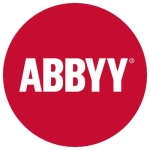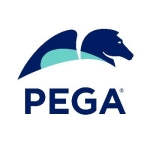What is our primary use case?
We use a feature called Document Understanding to extract data from invoices and generate reports. It uses the invoice number, amount, line amount, description, addresses, remit address, and other fields. This is the current project I'm working on. I'm using all the features available in UiPath to train the invoices to identify all the fields. Then, I deploy the training, create a pipeline, and use that ML skill in my coding while developing a project.
We are doing this for our team talent payments team. They usually receive different invoices from vendors for various reasons. My company currently has 700 vendors listed. These vendors send invoices for their services, and the talent payment team used to fetch and extract the data manually before we started working on this project. Whenever they received an invoice, they would open it and write down the data.
We have now completed phase one of the project and are in phase two. For this process, the bot will receive all the invoices and extract all the data needed by the team. We will then create a consolidated report in Excel for each vendor and present it to the talent team. This automation saves the talent team time. In addition, I have used email automation, Excel automation, API calls, and UI automation in this project.
We deploy UiPath on-premises, cloud, and hybrid environments depending on the organization's requirements.
How has it helped my organization?
Building automation using UiPath is really easy. Studio is a drag-and-drop environment with different palettes, search options, and simple properties, inputs, and outputs. It doesn't take much effort to develop a workflow in UiPath, even complex ones. UiPath also has recorders, so we can perform our actions and start recording before we perform them. UiPath will then develop the workflow for us based on our screen actions.
UiPath enables us to implement end-to-end automation, which is important to me from an analytics perspective. It makes it easier for us to provide solutions to businesses, regardless of their requirements. With UiPath, we can keep manual interaction to a minimum, from providing input to getting output. UiPath apps and interactions also make it easier to automate processes. In the past, people would develop scripts to automate tasks, but they had to keep in mind that there would still be some manual work involved, such as preparing an input file. With UiPath, we can minimize this manual intervention and prerequisites. This is a significant advantage.
Everyone on our team uses the Academy Courses when they start using UiPath, and whenever a new feature is added, we search the course list for the updated courses. The biggest benefit is being able to learn UiPath directly from the developers, rather than from a third party. When we learn from a third party, they have to learn UiPath first, and then try to explain it to us based on their own understanding. But when we learn from UiPath, it's like a personal experience, because they developed the product and know how it's supposed to be used. The other great thing about the Academy is that it's very interactive, with question-and-answer sections and plenty of resources. For example, they provide input files so we can try out new features. All in all, the Academy makes it really easy to learn UiPath. We just have to take the startup course, and they explain everything through videos, interactive sections, questions, tests, and data flows.
UiPath helps speed up and reduce the cost of our digital transformation.
It also helps reduce human errors in the normal processes that we develop.
UiPath has freed up our employee time. For example, in the onboarding and interview processes, our organization may have many people applying on any given day. Sorting through applications was done manually, but with UiPath, the process has been significantly sped up. UiPath now performs all of the tasks, such as getting candidate details and making consolidation reports for the hiring team. Overall, UiPath has saved us a lot of time and effort, and it has been a great return on investment.
What is most valuable?
The most valuable feature is the document understanding feature of this current project, which is better than ABBYY FlexiCapture or Automation Anywhere. It can learn on its own, given enough instructions and data. With training, we can actually train it to recognize the specific fields on invoices that we want. For example, UiPath can still provide information from a few of the invoice fields without training, such as the invoice number and date, which are present on every invoice. However, some vendors have specific fields on their invoices, such as the candidate name, job location, or start date, which we can train UiPath to recognize. This gives us the ability to train UiPath beyond the common things, if we are looking for any specific information or if we want to personalize it for a vendor. We are then able to use this trained model in our code, which is very helpful.
I also like the Excel automation feature. UiPath has recently updated the Excel activities package, which gives us more options with a more modern look and feel.
What needs improvement?
I find the features UiPath provides to be excellent, but the documentation is difficult to maintain. I have noticed that it can be difficult to find information on some features in the UiPath documentation portal. The document portal needs to be kept more up-to-date. UiPath will release the new feature, but the document portal will still have the older version information. The documentation portal could be easier to navigate if it were redesigned to make it easier to find information about a particular feature. It would be great if the portal were updated as soon as new features are released.
For how long have I used the solution?
I have been using UiPath for almost three years.
What do I think about the stability of the solution?
We have occasionally observed some abnormalities, but we have not yet found the cause. For one of the processes, we are running macros and triggering them with UiPath. These macros can take ten to eleven hours to run. Sometimes, UiPath stops while a macro is still running. Once the macro is completed, UiPath is supposed to perform another task, but the macro takes so long to run that this does not happen. I believe this is a problem with our program, as it is taking too long to complete. These kinds of delays can occur, and that is understandable.
How are customer service and support?
There are many areas where support can improve. However, it is not that bad. In terms of sticking to schedules, they are available quickly and listen to all of the problems. Sometimes, we have hit roadblocks because the people assigned to solve a particular support ticket did not have any idea about the feature. This has caused problems for us, as we have had to spend time filling in another person who actually had the knowledge about that feature. We have run into this problem a few times.
How would you rate customer service and support?
Which solution did I use previously and why did I switch?
Our organization previously used Automation Anywhere, a script-based RPA tool. The fact that we moved to UiPath suggests that we wanted to change products for a reason. We must have heard that UiPath is better than Automation Anywhere in some way, which is why we made the switch.
What was our ROI?
We have seen a good return on investment.
What other advice do I have?
I would rate UiPath seven out of ten. UiPath has a lot of features they are working on but they take a long time to enter production.
Maintenance for UiPath is minimal. Small things such as changing the passwords because of the password rotation policy. We maintain our bots through VMs that run on AWS.
I recommend UiPath because it is a low-code/no-code solution that can be used by non-technical people. The Academy courses, which train users specifically on how to use the tool, make it easy to develop and automate processes. UiPath also offers a community version that includes most of the features of the paid version. Earlier in my career, I learned to use Blue Prism, which is a closed-source solution that only had basic courses available in its academy. It was difficult to use compared to UiPath, and it was hard to get any information on any forum or from its academy on how to use the tool and update it. In terms of learning, use, and understanding, UiPath is much easier than other solutions.
Which deployment model are you using for this solution?
Hybrid Cloud
If public cloud, private cloud, or hybrid cloud, which cloud provider do you use?
Amazon Web Services (AWS)
Disclosure: PeerSpot contacted the reviewer to collect the review and to validate authenticity. The reviewer was referred by the vendor, but the review is not subject to editing or approval by the vendor. The reviewer's company has a business relationship with this vendor other than being a customer: Partner




















